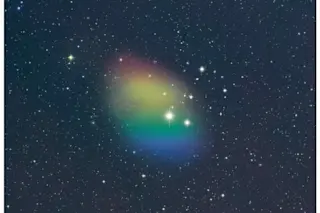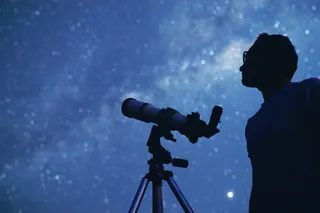Astronomers may have found a dark, primordial galaxy — an enormous, undisturbed mass of cold hydrogen gas that has yet to form any stars — sitting in the modern-day universe.
If confirmed, the object could offer astronomers a look at an early stage of galactic evolution. “I’ve been in this field for quite a few decades, and we’ve wanted to find something like this for a very long time,” study leader Karen O’Neil, an astronomer at the Green Bank Observatory in West Virginia, tells Astronomy.
The first hint of something unusual was a discrepancy between observations made by the Green Bank Telescope (GBT) and the Nançay Radio Telescope in France as part of a coordinated survey of faint galaxies. Though they were supposed to be looking at the same patch of sky, the 100-meter-wide GBT was seeing something the Nançay Radio Telescope wasn’t.
“Upon looking a little bit closer at ...














